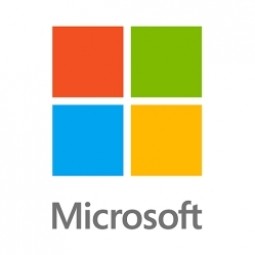
技术
- 基础设施即服务 (IaaS) - 云数据库
- 基础设施即服务 (IaaS) - 私有云
适用行业
- 医疗保健和医院
客户
GE医疗
关于客户
GE Healthcare 是通用电气的一个部门,提供医学成像和信息技术、医学诊断、患者监测系统、性能改进、药物发现和生物制药制造技术。
挑战
该公司的两项业务——GE Healthcare IT 和 GE Healthcare Global Services——力求为客户提供更灵活、更安全的云解决方案。用于综合护理的 GE Healthcare IT 软件和服务在整个医疗保健系统和护理途径中创造了可操作的洞察力,从而实现更好的临床和财务结果。医疗保健全球服务帮助卫生系统管理其运营资源,以安全、高效且经济地提供高质量的医疗服务。这两个业务集团都知道,虽然全球医疗保健提供者需要更好地洞察和控制数据以提高效率和改善临床护理,但他们还必须保护患者信息并满足越来越具有挑战性的监管要求此外,公司力求在不投入额外时间的情况下实现其目标和本地基础设施的资金。在美国,GE Healthcare 试图简化有意义的使用 (MU) 报告,以帮助促进获得通过《经济和临床健康健康信息技术法案》(HITECH Act) 制定的计划的奖励资格所需的 MU 证明。其他国家的客户也有合规需求,GE Healthcare 想要一种能够轻松适应广泛的隐私和安全要求的解决方案。
解决方案
GE Healthcare 拥有一个云合作伙伴生态系统,并决定利用 Microsoft Azure 平台及其基础架构即服务 (IaaS) 产品。迁移到云将提供多种好处,包括更容易、更集中的软件分发和管理,以及更好的可扩展性。该公司还被 Microsoft Azure 环境准备好帮助客户满足他们在医疗保健行业的合规性要求所吸引。除了技术保障之外,Azure 还提供 HIPAA 商业伙伴协议 (BAA),其中 Microsoft 承诺遵守 HIPAA 和 HITECH 法案中规定的某些安全和隐私条款。 GE Healthcare 和 Microsoft 启动了将在本地生产环境中运行的应用程序迁移到 Microsoft Azure 的概念验证。使用 Microsoft Azure 虚拟机 (VM) 实现了无缝过渡。 VM 托管多个应用程序组件,包括在 SQL Server 软件上运行的数据库实例和在 Microsoft .NET Framework 程序集中运行的业务逻辑。 Microsoft Azure VM 上的 SQL Server 和 .NET 都提供与本地基础架构的完全兼容性。此外,SQL Server AlwaysOn 功能可确保高可用性。该项目很快扩展到多个应用程序;有些正在生产中,有些是新的。当 GE Healthcare 看到 Microsoft Azure 在概念验证中可以做什么时,它明白了它可以为多个医疗保健场景带来的价值。
运营影响

Case Study missing?
Start adding your own!
Register with your work email and create a new case study profile for your business.
相关案例.

Case Study
Hospital Inventory Management
The hospital supply chain team is responsible for ensuring that the right medical supplies are readily available to clinicians when and where needed, and to do so in the most efficient manner possible. However, many of the systems and processes in use at the cancer center for supply chain management were not best suited to support these goals. Barcoding technology, a commonly used method for inventory management of medical supplies, is labor intensive, time consuming, does not provide real-time visibility into inventory levels and can be prone to error. Consequently, the lack of accurate and real-time visibility into inventory levels across multiple supply rooms in multiple hospital facilities creates additional inefficiency in the system causing over-ordering, hoarding, and wasted supplies. Other sources of waste and cost were also identified as candidates for improvement. Existing systems and processes did not provide adequate security for high-cost inventory within the hospital, which was another driver of cost. A lack of visibility into expiration dates for supplies resulted in supplies being wasted due to past expiry dates. Storage of supplies was also a key consideration given the location of the cancer center’s facilities in a dense urban setting, where space is always at a premium. In order to address the challenges outlined above, the hospital sought a solution that would provide real-time inventory information with high levels of accuracy, reduce the level of manual effort required and enable data driven decision making to ensure that the right supplies were readily available to clinicians in the right location at the right time.

Case Study
Gas Pipeline Monitoring System for Hospitals
This system integrator focuses on providing centralized gas pipeline monitoring systems for hospitals. The service they provide makes it possible for hospitals to reduce both maintenance and labor costs. Since hospitals may not have an existing network suitable for this type of system, GPRS communication provides an easy and ready-to-use solution for remote, distributed monitoring systems System Requirements - GPRS communication - Seamless connection with SCADA software - Simple, front-end control capability - Expandable I/O channels - Combine AI, DI, and DO channels

Case Study
Driving Digital Transformations for Vitro Diagnostic Medical Devices
Diagnostic devices play a vital role in helping to improve healthcare delivery. In fact, an estimated 60 percent of the world’s medical decisions are made with support from in vitrodiagnostics (IVD) solutions, such as those provided by Roche Diagnostics, an industry leader. As the demand for medical diagnostic services grows rapidly in hospitals and clinics across China, so does the market for IVD solutions. In addition, the typically high cost of these diagnostic devices means that comprehensive post-sales services are needed. Wanteed to improve three portions of thr IVD:1. Remotely monitor and manage IVD devices as fixed assets.2. Optimizing device availability with predictive maintenance.3. Recommending the best IVD solution for a customer’s needs.

Case Study
HaemoCloud Global Blood Management System
1) Deliver a connected digital product system to protect and increase the differentiated value of Haemonetics blood and plasma solutions. 2) Improve patient outcomes by increasing the efficiency of blood supply flows. 3) Navigate and satisfy a complex web of global regulatory compliance requirements. 4) Reduce costly and labor-intensive maintenance procedures.

Case Study
Harnessing real-time data to give a holistic picture of patient health
Every day, vast quantities of data are collected about patients as they pass through health service organizations—from operational data such as treatment history and medications to physiological data captured by medical devices. The insights hidden within this treasure trove of data can be used to support more personalized treatments, more accurate diagnosis and more advanced preparative care. But since the information is generated faster than most organizations can consume it, unlocking the power of this big data can be a struggle. This type of predictive approach not only improves patient care—it also helps to reduce costs, because in the healthcare industry, prevention is almost always more cost-effective than treatment. However, collecting, analyzing and presenting these data-streams in a way that clinicians can easily understand can pose a significant technical challenge.




